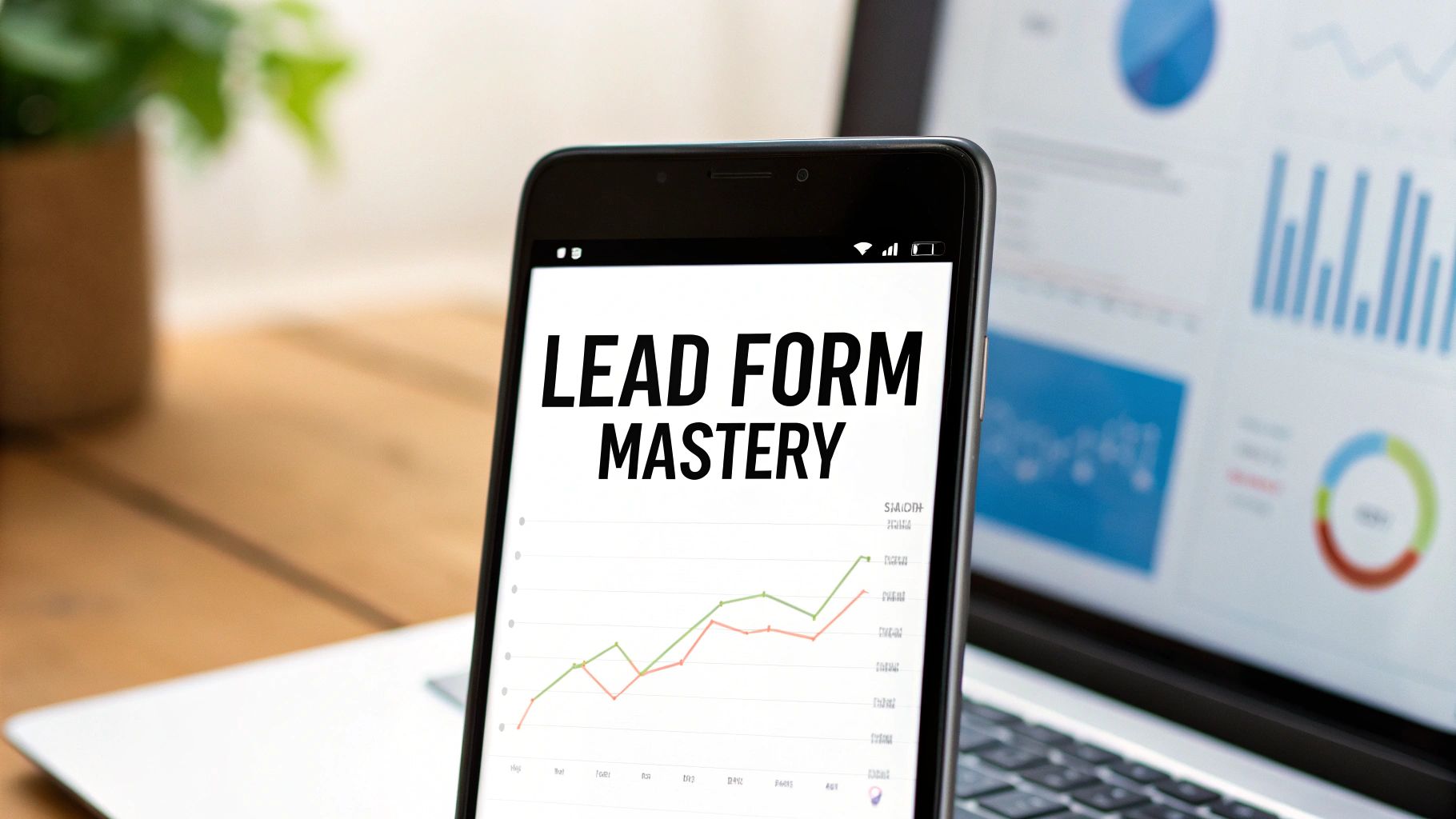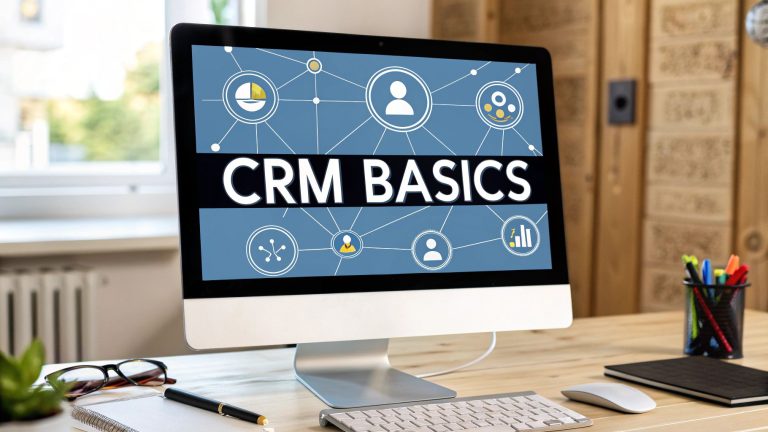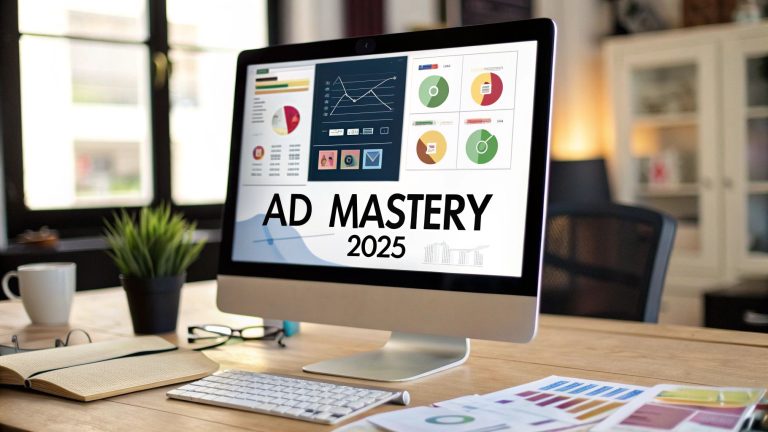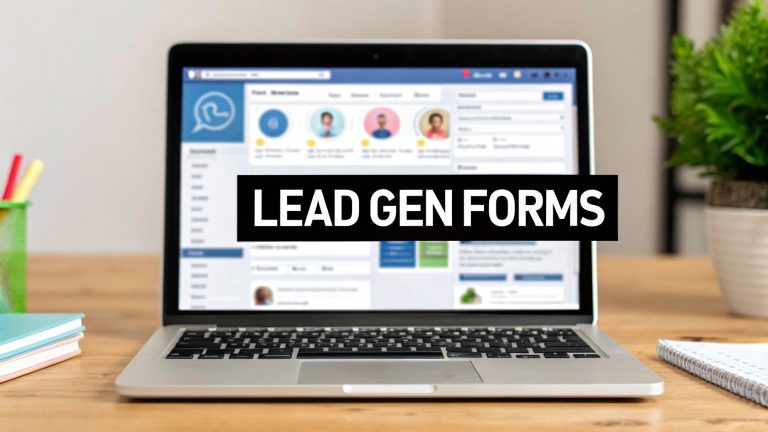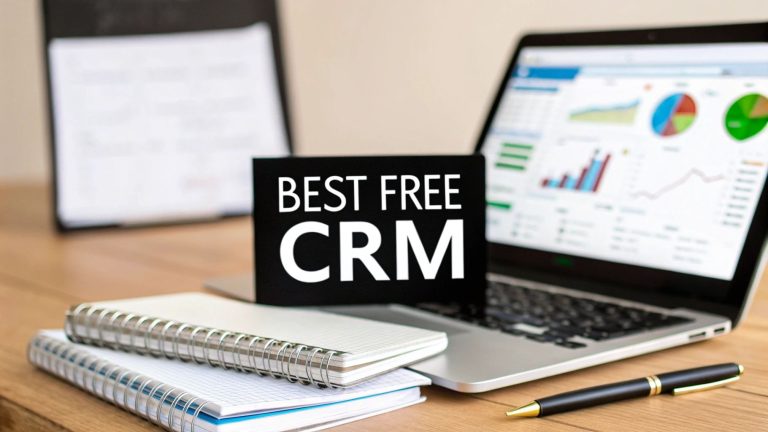Facebook Lead Form Mastery: Your Agency Success Blueprint
Building Your Facebook Lead Form Foundation That Works
A solid foundation is crucial for any successful endeavor, and your Facebook Lead Form campaigns are no different. This efficient approach to lead generation minimizes the hurdles that often prevent conversions, offering a distinct advantage over traditional landing pages. Instead of directing potential customers to a separate website, you're giving them a user-friendly, in-app experience that captures their interest without interrupting their Facebook browsing. This seamless process promotes higher engagement and, ultimately, more leads.
Understanding the Power of One-Click Lead Capture
This user-friendliness comes from minimizing the effort required. People are more inclined to act when it's easy to do so. Facebook Lead Forms capitalize on this by pre-filling forms with user information, simplifying the submission process to a single click. This drastically reduces the barriers to entry, resulting in improved conversion rates. Think about filling out a long contact form versus clicking a button—the latter is far more appealing.
Key Components of High-Converting Facebook Lead Forms
Effective Facebook Lead Forms require attention to a few key components. First, your headline needs to be engaging and relevant to your target audience. It's the first thing people see, so it must grab their attention. Next, form fields should be concise and ask only for crucial information. Too many fields can be overwhelming and discourage completion. Lastly, a compelling lead magnet, like a discount or exclusive content, can significantly increase submissions.
The Evolution of Facebook Lead Ads
Facebook Lead Forms have significantly impacted marketing. Initially introduced as Facebook Lead Ads in 2015, they changed lead generation by letting businesses collect customer information directly within the Facebook platform. This eliminated the need for users to leave for external landing pages. By 2025, these Facebook Lead Ads became a vital tool for efficient lead capture, especially because of the auto-populate feature, which uses users' profile information to pre-fill forms. Learn more about Facebook Lead Ads.
Addressing Common Misconceptions
Many marketers hesitate to use Facebook Lead Forms due to misconceptions. Some think they're too basic or lack the branding options of dedicated landing pages. However, these forms offer a unique advantage by capturing leads directly within the Facebook ecosystem. This means using Facebook's large user base and targeting abilities to reach highly specific audiences. This focused approach, combined with the inherent ease of use, can lead to higher conversion rates and a better return on investment. This sets the stage for creating Facebook Lead Form campaigns that genuinely convert.
Creating Facebook Lead Form Campaigns That Convert
Building a successful Facebook Lead Form campaign requires more than just setting it up. It involves a strategic approach to create compelling forms that grab attention and encourage prospects to take action. This means understanding your audience, writing concise headlines, designing user-friendly forms, and offering valuable incentives. Let's explore the key elements of high-converting Facebook Lead Form campaigns.
Crafting Compelling Headlines
Your headline is the first impression, the gateway to capturing a prospect's attention amidst the constant flow of information on Facebook. Keep it short, benefit-driven, and relevant to the offer in your lead form. For example, instead of "Learn More," try "Get a Free Consultation Today!" This clearly communicates value and entices clicks.
Designing User-Friendly Forms
A cluttered or lengthy form is a sure way to lose potential leads. Request only essential information—the less, the better. Each extra field increases the chance of abandonment. Prioritize crucial information for initial contact, such as name, email address, and phone number. Gather additional details later in the sales process.
Offering Irresistible Lead Magnets
Encourage prospects to share their information by offering valuable lead magnets. These could include exclusive discounts, free trials, downloadable guides, or webinars. The key is to offer something worthwhile in exchange for personal information.
Targeting the Right Audience
Effective targeting is crucial. Facebook provides powerful targeting options to reach specific audience segments based on demographics, interests, and behaviors. This ensures your lead forms reach the most qualified prospects, increasing your conversion chances. This precise targeting and ease of submission make Facebook Lead Forms a highly effective marketing channel, especially with Facebook's vast user base. Learn more about the effectiveness of Facebook Lead Ads here.
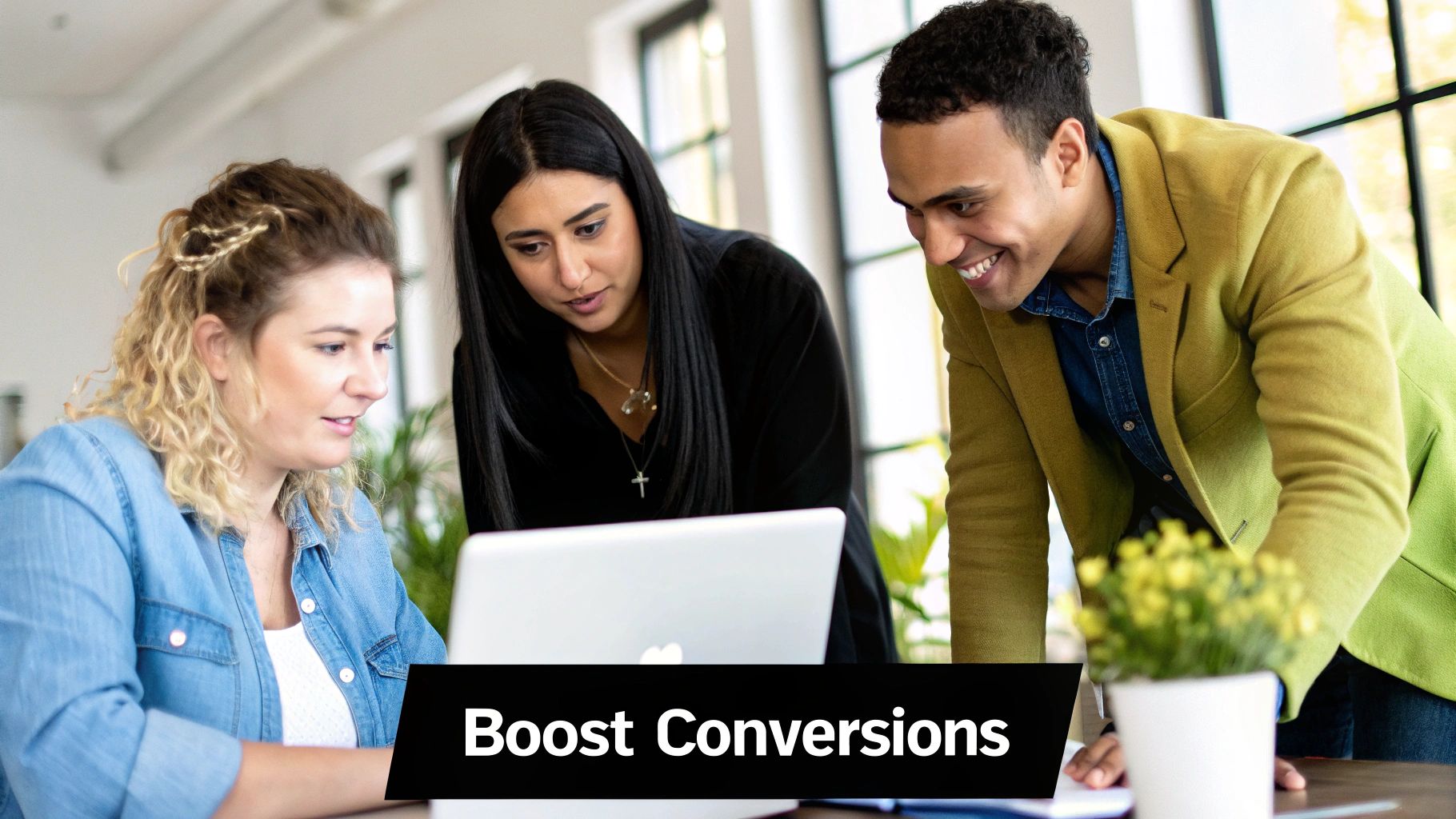
Implementing A/B Testing
Continuously optimize your campaigns with A/B testing. Test different headlines, images, form fields, and lead magnets to find what resonates with your target audience. This data-driven method allows for constant improvement and ensures you're always refining campaigns for maximum conversion rates.
Optimizing for Mobile
Most Facebook users access the platform on mobile devices. Ensure your lead forms are optimized for mobile viewing. This means using concise forms, large buttons, and clear visuals easily viewed on smaller screens. A seamless mobile experience is crucial for maximizing conversion rates.
By implementing these strategies, you can turn your Facebook Lead Form campaigns into powerful lead generation tools, capturing valuable leads and driving significant business growth.
Maximizing Facebook Lead Form ROI Through Smart Optimization
After building and launching your Facebook Lead Form campaigns, the next critical step is optimizing them for maximum return on investment (ROI). This involves understanding key performance indicators (KPIs), implementing cost-effective scaling strategies, and continuously monitoring performance. This proactive approach ensures you're not just generating leads, but generating profitable leads.
Key Metrics for Measuring Success
Several metrics are essential for evaluating Facebook Lead Form performance. Cost per lead (CPL) is a primary indicator, showing how much each lead costs. A lower CPL is generally better, but it's important to balance this with lead quality.
Conversion rate reveals the percentage of people viewing your ad who complete the lead form. A higher conversion rate indicates a more effective ad and form combination.
Finally, lead quality measures how likely these leads are to become paying customers. While not directly measurable within Facebook, tracking downstream conversions in your CRM helps assess the true value of generated leads.
Optimizing Form Fields for Higher Completion Rates
The number of form fields significantly impacts completion rates. Too many fields can overwhelm potential leads, leading to abandonment. The infographic below visually represents the correlation between the number of form fields and average completion rates.
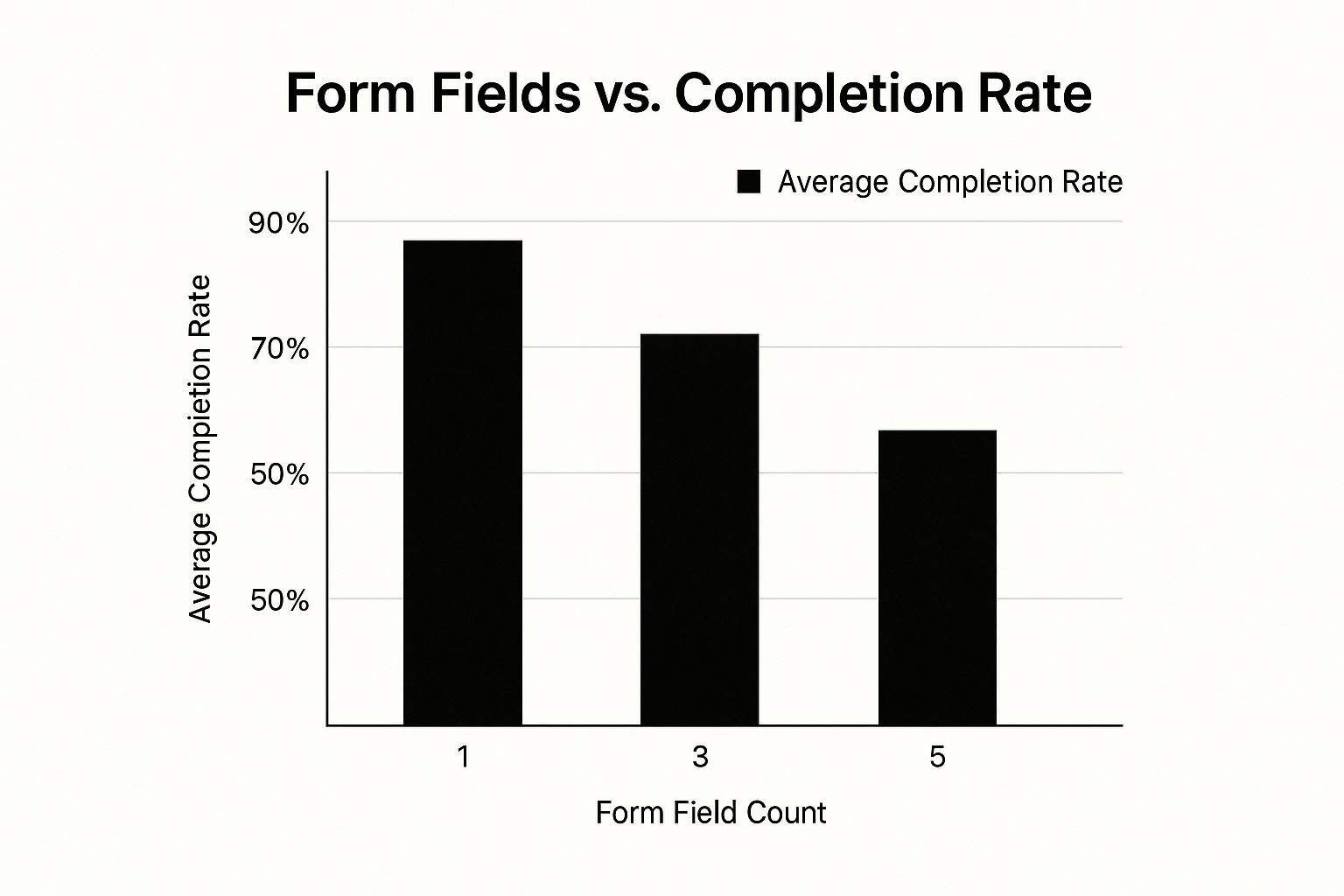
As the infographic demonstrates, fewer fields generally result in higher completion rates. Striking a balance between gathering necessary information and keeping the form concise is crucial for maximizing conversions. Start with essential fields like name and email, then progressively gather more data as the lead moves through the sales funnel. You might be interested in: How to download leads from Facebook.
Scaling Strategies for Long-Term Growth
Once you have a profitable campaign, scaling it effectively is the next challenge. This involves increasing your budget and reach while maintaining lead quality. Advanced bidding strategies, such as target cost bidding, can help control CPL as you scale.
Additionally, expanding your targeting to similar audiences allows you to reach a broader pool of potential customers. However, it’s important to continually monitor performance as you scale to ensure your CPL and lead quality remain within acceptable ranges.
In 2025, businesses using Facebook Lead Forms reported generating an average of 1,877 leads per month, with a mean CPL of $198.44. This highlights the platform’s potential for generating a significant volume of leads at a competitive cost. Find more detailed statistics here.
Continuous Monitoring and Optimization
Regularly reviewing campaign performance is essential. Track your key metrics, analyze trends, and identify any arising issues. This allows you to make data-driven adjustments to your targeting, bidding, and creative to maintain optimal performance.
This ongoing optimization is key to long-term success with Facebook Lead Forms. Consistent monitoring helps catch problems early, preventing wasted budget and ensuring sustainable growth.
To help you benchmark your performance, take a look at the table below:
Facebook Lead Form Performance Benchmarks by Industry
Compare average cost per lead, conversion rates, and monthly lead volume across different industries.
|
Industry |
Average Cost Per Lead |
Monthly Lead Volume |
Conversion Rate |
|---|---|---|---|
|
Finance |
$25 |
500 |
8% |
|
E-commerce |
$15 |
1000 |
10% |
|
Healthcare |
$35 |
250 |
5% |
|
Technology |
$20 |
750 |
7% |
This table provides illustrative examples and may not reflect current market conditions.
As you can see, CPL and lead volume can vary significantly between industries. It's crucial to track your performance against relevant benchmarks to identify areas for improvement and ensure your campaigns remain competitive.
Advanced Facebook Lead Form Strategies From Industry Veterans
Beyond the basics of setting up a Facebook Lead Form, there's a whole world of advanced tactics that can truly elevate your campaigns. These strategies, used by seasoned marketers, consistently deliver impressive results, turning potential customers into paying ones. It all comes down to understanding how to best utilize Facebook's powerful tools and features to optimize your lead generation process.
Dynamic Creative Optimization
Dynamic Creative Optimization (DCO) uses Facebook's machine learning to personalize your ad creatives for each user. This means different combinations of images, headlines, and body text are automatically tested and shown to various audience segments. Facebook does the heavy lifting, presenting the most relevant message to each person, maximizing your chances of grabbing their attention and converting them into a lead. Think of it as a personalized advertising experience for every potential customer.
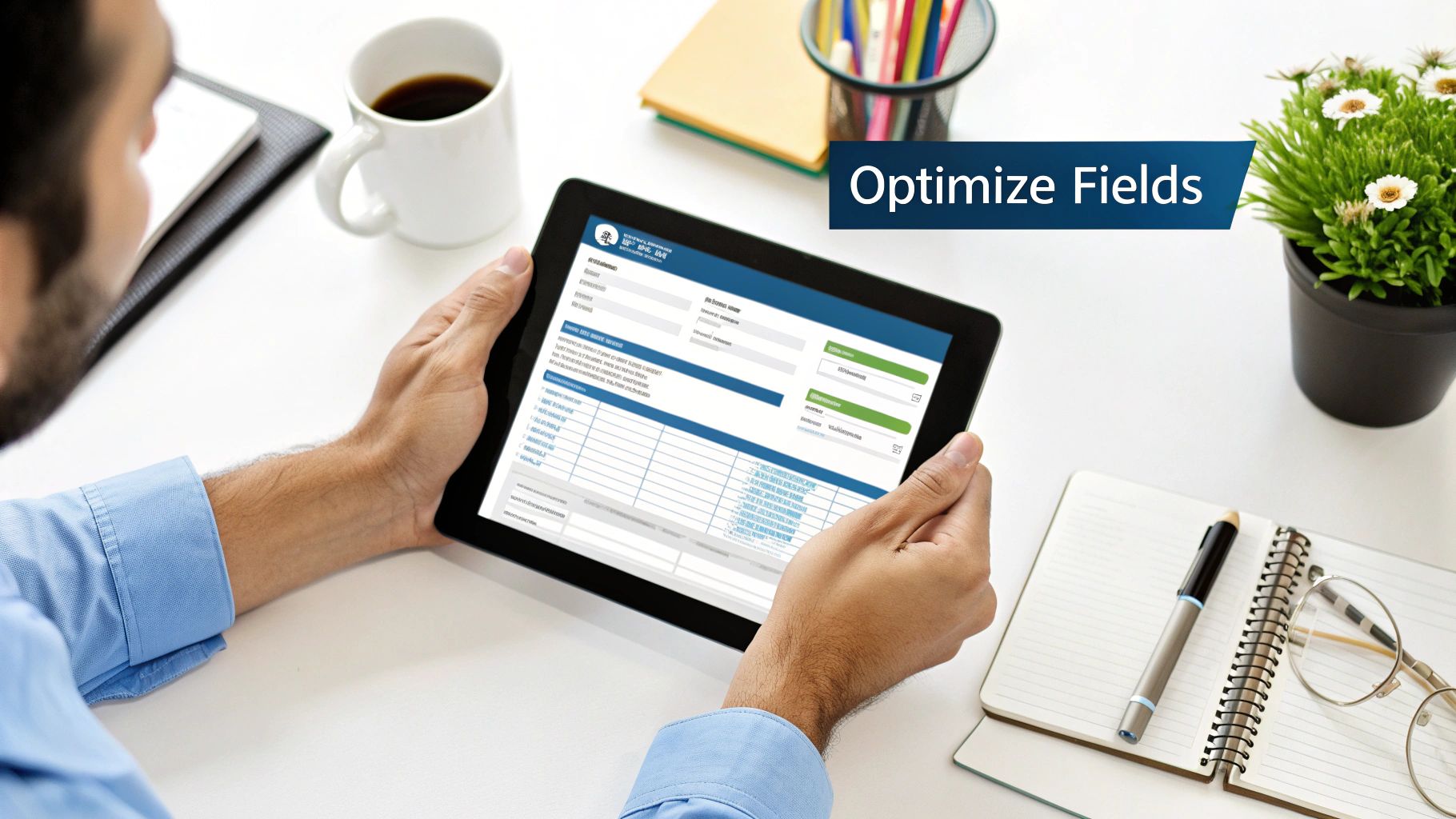
Custom Audience Integration
Integrating custom audiences lets you target your existing customer data with Facebook Lead Forms. You can upload your email list and create a lookalike audience to target similar profiles. This helps you reach people more likely to be interested in your offerings because they share characteristics with your current customer base.
Retargeting Sequences for Nurturing Leads
Retargeting is key for guiding leads through your sales funnel. After someone interacts with your Facebook Lead Form, nurture them with targeted ads featuring relevant content or offers. This keeps you top-of-mind and encourages them towards a purchase. This is especially useful for longer sales cycles requiring multiple touchpoints to convert a lead into a customer. Retargeting sequences ensure continued engagement and increase the likelihood of conversion.
Progressive Profiling
Progressive profiling allows you to gather lead information gradually. Instead of asking for everything at once, you start by collecting basic information like name and email. Then, through later interactions, you gather more detailed information based on their interests and actions. This less intrusive approach improves completion rates while building a more complete picture of each lead.
Multi-Step Nurturing Sequences
Creating multi-step nurturing sequences is crucial for converting prospects into paying customers. This involves delivering personalized messages and content at each stage of their buying journey. For example, after a lead magnet download, you might follow up with a case study showcasing your product's benefits, then offer a free trial or consultation.
These advanced strategies are essential for maximizing the lifetime value of every lead. By implementing them, you can effectively nurture prospects, build stronger relationships, and drive consistent business growth.
Mastering Facebook's Lead Generation Ecosystem
Success with Facebook Lead Forms depends on understanding their place within Facebook's larger advertising network. This means recognizing the strategic benefits of working within Meta's environment, including useful integrations with other platforms. This interconnectedness provides significant opportunities to boost your lead generation results.
Leveraging Meta's Platform Integrations
Connecting your Facebook Lead Forms with other Meta platforms like Instagram, Messenger, and WhatsApp can greatly expand your audience. For instance, running lead generation campaigns on Instagram can connect with a different audience segment. Using Messenger for follow-up allows for personalized engagement and quicker replies. These combined approaches create a more unified and successful lead generation strategy.
Data Insights and Campaign Optimization
Facebook provides a wealth of data insights that are essential for optimizing your campaigns. Many marketers, however, don't fully utilize these resources. Analyzing metrics like cost per lead, conversion rates, and lead quality offers valuable data for refining your targeting, ad creatives, and overall campaign strategy. This data-driven process helps you continually improve results and maximize your ROI.
Adapting to Algorithm Changes and Platform Updates
Facebook's algorithm is always changing. Staying informed about these updates and adjusting your strategies is essential for keeping your campaigns effective. This involves staying current with industry news, monitoring Facebook's official announcements, and consistently testing new methods. You may also want to explore resources like Best ways to manage Facebook Leads with a CRM in 2025.
Understanding Facebook's Commercial Impact
Facebook holds significant influence in the digital advertising landscape. In 2025, its global ad revenue was projected to be $116.53 billion, making it a dominant force in the industry. A substantial portion of this revenue comes from businesses utilizing Facebook Lead Forms to turn social media engagement into valuable customer leads. Learn more about these statistics from Hootsuite. This highlights the platform’s effectiveness and its potential for businesses seeking lead generation.
Integrating Facebook into Your Overall Marketing Mix
Facebook Lead Forms shouldn’t operate in a vacuum. They should seamlessly integrate with your overall marketing strategy. This means understanding how they complement other marketing channels like email marketing or content marketing, and contribute to your wider business objectives. By strategically positioning Facebook Lead Forms within your marketing mix, you can maximize their effect and gain a competitive advantage. This comprehensive approach ensures all your marketing activities work in harmony to drive consistent business growth.
Scaling Your Facebook Lead Form Success With Data-Driven Decisions
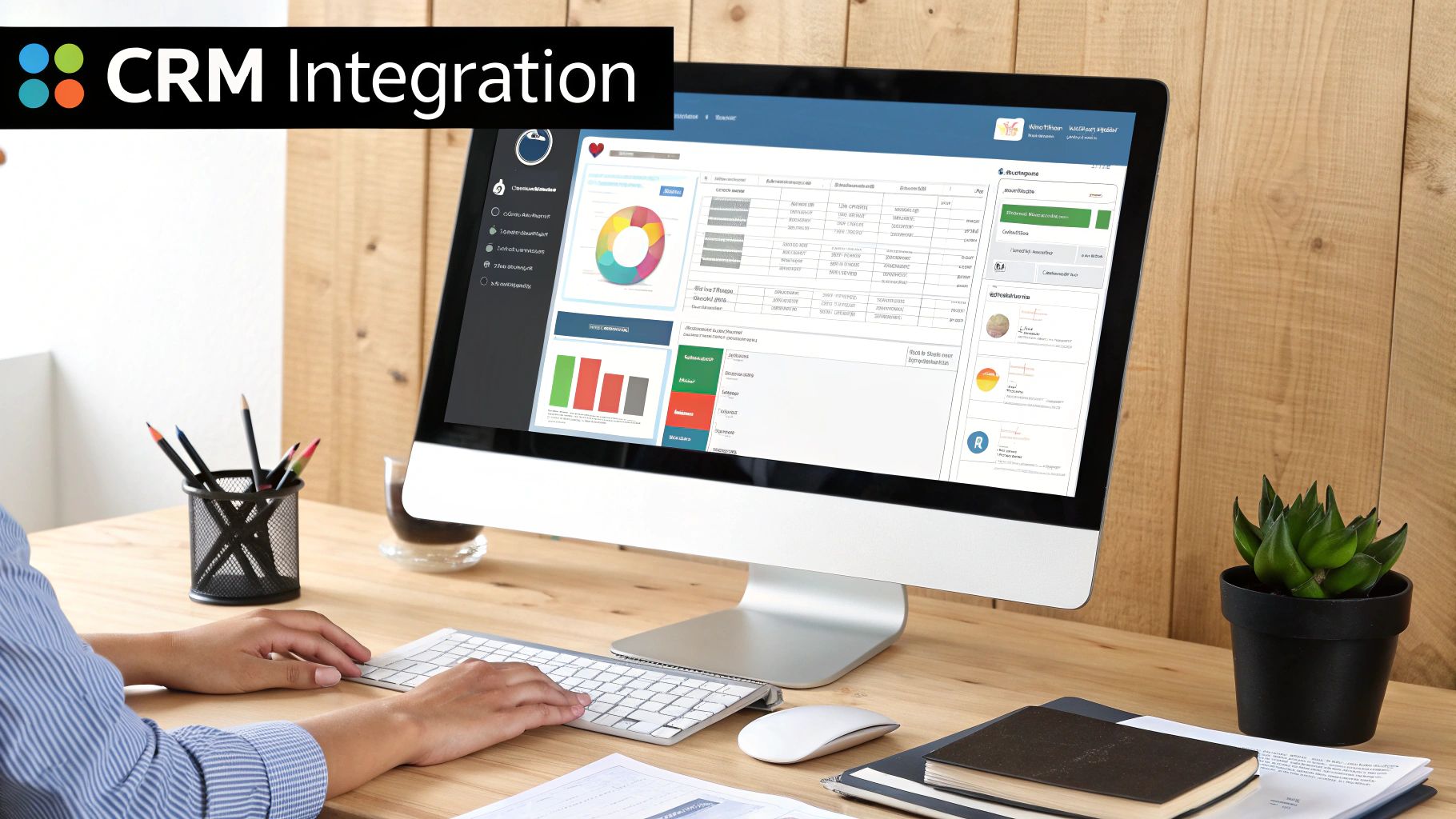
Want to see sustainable growth from your Facebook Lead Forms? It all comes down to measuring what matters and using that data to improve your campaigns. This data-driven approach is the key to long-term, profitable results.
Essential Metrics for Tracking Facebook Lead Form Performance
There are several key performance indicators (KPIs) you need to watch. Cost per lead (CPL) is a fundamental metric, showing you how much each lead is costing you. Lower is better, of course, but don't sacrifice lead quality just to achieve a low CPL. Balancing these two is crucial for a strong return on investment (ROI).
Conversion rate is another vital metric. It shows the percentage of people who see your ad and actually complete the lead form. A high conversion rate usually means your ad creative and form design are working well. Tracking this metric helps pinpoint areas for improvement.
Beyond these initial metrics, understanding the complete customer journey is vital. Attribution modeling can help untangle the different paths users take before converting, revealing the true impact of your Facebook Lead Forms.
It's well documented that social media marketing generates leads. In fact, 68% of marketers confirm that social media marketing, including Facebook, has helped them generate more leads. Lead Ads play a significant role in this growth. Even though 44% of sales representatives say they're too busy to follow up on leads, the detailed information captured by Facebook Lead Forms makes lead nurturing much more efficient. Learn more about lead generation statistics here.
Setting Up Analytics for Actionable Insights
You need analytics systems that give you actionable data. Connect your Facebook Lead Forms to a CRM like LeadSavvy Pro to automate lead retrieval and management. This allows you to see data in real-time and streamline how you handle those leads. This organized approach sets the stage for making informed decisions and optimizing your strategy. You might also be interested in how to send SMS to Facebook leads instantly.
Interpreting Performance Data for Strategic Decision-Making
Collecting data is only half the battle. Knowing how to interpret it is just as important. Analyzing trends in your CPL, conversion rate, and lead quality can reveal what’s working and where you need to make adjustments. For instance, a rising CPL could mean increased competition or that your targeting needs some work.
Implementing Data-Driven Optimization
Put your data insights to work to optimize your campaigns. A/B testing different headlines, images, and form fields is essential. Use performance data to adjust your targeting and refine your audience reach. This continuous optimization cycle will maximize the effectiveness of your Facebook Lead Forms.
Proven Methods for Scaling Success
Scaling effectively means maintaining lead quality while expanding your reach. Systematic testing ensures that changes made during scaling don't hurt your performance. Audience expansion strategies, like creating lookalike audiences, help you connect with new potential customers.
Budget management is equally critical. Gradually increase your budget while carefully monitoring those key metrics. This measured approach helps maximize your growth potential without breaking the bank.
Tracking and Reporting for Clear ROI
Tracking and reporting are essential for showing the value of your work. Use templates and dashboards to visualize your key metrics and communicate your results effectively. Clearly presenting ROI to stakeholders demonstrates the effectiveness of your Facebook Lead Form campaigns.
This data-driven approach ensures sustainable growth and consistent improvement. By focusing on these strategies, your Facebook Lead Forms can become a powerful driver for business growth.
Before diving into optimization strategies, let's explore some key metrics you should be tracking. The table below outlines performance benchmarks for Facebook Lead Forms.
|
Metric |
Good Performance |
Excellent Performance |
Red Flags |
|---|---|---|---|
|
Cost Per Lead (CPL) |
Varies by industry, but generally under $10 |
Under $5 |
Consistently over $20 |
|
Conversion Rate |
5-10% |
15% or higher |
Below 2% |
|
Lead Quality (e.g., sales qualified leads) |
20-30% of leads qualify |
40% or higher |
Less than 10% |
This table gives you a starting point for evaluating your campaigns. Remember that "good" and "excellent" performance can vary based on your industry and specific goals. Regularly review these metrics to identify areas for improvement and scale your campaigns effectively.
Key Takeaways
This guide provides a clear roadmap for maximizing your Facebook Lead Forms, breaking it down into actionable steps for immediate results. We'll explore essential setup checklists, key optimization strategies, and potential warning signs that might necessitate adjustments. By understanding these core components, you can establish a robust lead generation engine built for long-term success.
Setting Up for Success: Your Facebook Lead Form Checklist
-
Clear Objective: Before anything else, define your campaign goal. Is your focus primarily on brand awareness, generating leads, or driving direct sales? A well-defined objective will guide your strategy.
-
Targeted Audience: Harness the power of Facebook's detailed targeting options to ensure you're reaching the ideal prospects for your offer. This precision targeting is essential for maximizing your return on investment.
-
Compelling Headline: Your headline is the first impression. Craft a concise and attention-grabbing headline that instantly communicates a clear value proposition to your target audience.
-
Concise Form Fields: Respect your audience's time. Keep your lead forms short and to the point, requesting only essential information upfront. Longer forms can deter potential leads.
-
Irresistible Lead Magnet: Incentivize form submissions by offering a valuable lead magnet, such as a discount code, exclusive content, or a free trial. This provides tangible value in exchange for their information.
-
Mobile Optimization: In today's mobile-first world, ensure your forms are fully responsive and display seamlessly across all devices. A poor mobile experience can drastically reduce conversion rates.
Optimization Priorities for Maximum Impact
-
A/B Testing: Continuous A/B testing is crucial for optimization. Experiment with different ad elements like headlines, images, and body copy, as well as variations in your form fields, to identify what resonates best with your audience.
-
Cost Per Lead (CPL) Monitoring: Keep a close eye on your CPL and adjust your bidding strategy accordingly. Staying within budget while maximizing lead volume is a critical balancing act.
-
Conversion Rate Analysis: A strong conversion rate signals effective ad creatives and a well-designed lead form. Analyze your conversion data to identify areas for improvement.
-
Lead Quality Assessment: Don't just focus on quantity. Evaluate how many of your generated leads convert into paying customers to accurately measure your true ROI.
-
Retargeting Strategies: Implement retargeting strategies to nurture leads who have interacted with your form but haven't yet converted. Personalized follow-up ads can re-engage their interest and move them further down the sales funnel.
Recognizing Warning Signs and Making Adjustments
-
Rising CPL: An increasing CPL can be an indicator of heightened competition or ineffective targeting. Reassess your audience and bidding strategy to address this issue.
-
Low Conversion Rates: If your conversion rates are lagging, scrutinize your ad copy, form design, and the attractiveness of your lead magnet. Improvements in these areas can significantly impact conversions.
-
Poor Lead Quality: If leads aren't converting into customers, revisit your targeting criteria and lead qualification process. You may need to refine your approach to attract more qualified prospects.
-
Declining Lead Volume: A drop in lead volume might suggest audience fatigue or recent changes in the Facebook algorithm. Refresh your creative assets and targeting parameters to combat this decline.
Benchmarks and Workflows for Effective Lead Management
Understanding industry benchmarks and implementing efficient workflows are paramount for success with Facebook Lead Forms. The table below provides a general guideline for assessing your campaign performance:
|
Metric |
Good Performance |
Excellent Performance |
|---|---|---|
|
Cost Per Lead (CPL) |
Varies by industry, typically under $10 |
Under $5 |
|
Conversion Rate |
5-10% |
15% or higher |
|
Lead Qualification Rate |
20-30% |
40% or higher |
Once you've captured leads, efficient management becomes crucial. Tools like LeadSavvy Pro can automate lead retrieval and seamlessly integrate data in a CRM, enabling faster response times and more effective nurturing. This streamlines your workflow, allowing you to maximize the potential of each lead. Ready to streamline your lead generation and convert more high-quality leads into customers? Start your free LeadSavvy Pro account today!

